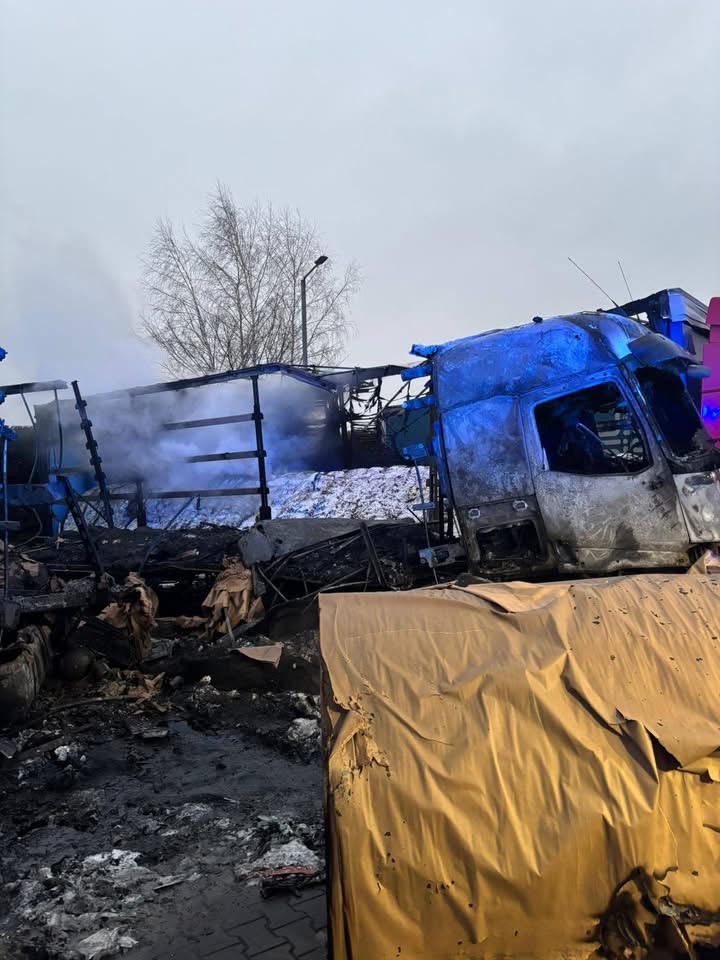
DOHA- Qatar Airways (QR) will resume operations to Aleppo (ALP), Syria, with three weekly flights starting 10 August 2025. This marks a major step in the airline’s regional expansion and follows the recent relaunch of flights to Damascus (DAM).
The Aleppo route will initially operate every Monday, Wednesday, and Sunday, increasing to four weekly flights from 1 September 2025. All flights will connect through Doha (DOH), the airline’s global hub at Hamad International Airport.
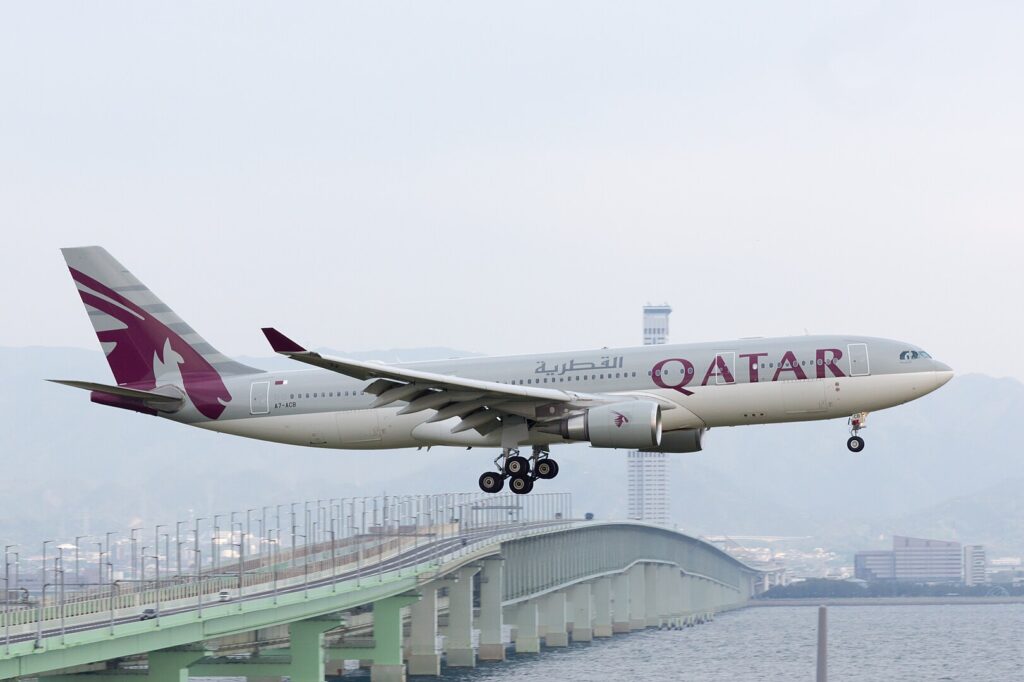 Photo: By lasta29 – Qatar Airways, QR802, Airbus A330-202, A7-ACB, Arrived from Doha, Kansai Airport, CC BY 2.0, https://commons.wikimedia.org/w/index.php?curid=39680592
Photo: By lasta29 – Qatar Airways, QR802, Airbus A330-202, A7-ACB, Arrived from Doha, Kansai Airport, CC BY 2.0, https://commons.wikimedia.org/w/index.php?curid=39680592Qatar Airways Aleppo, Syria Flights
Qatar Airways (QR) first launched services to Aleppo (ALP) in 2011 but later suspended operations due to the conflict in Syria.
With improved conditions and growing regional demand, the carrier is now re-establishing its presence in northern Syria, complementing the resumed services to Damascus (DAM) introduced earlier in 2025.
The flights between Doha (DOH) and Aleppo (ALP) will operate as follows:
From 10 August 2025:
- Flight QR414: Doha (DOH) → Aleppo (ALP), Departure: 08:30, Arrival: 11:40
- Flight QR415: Aleppo (ALP) → Doha (DOH), Departure: 13:55, Arrival: 17:00
- Operating Days: Monday, Wednesday, Sunday
From 1 September 2025:
- Additional service on Thursdays, bringing the total to four weekly flights.
This strategic expansion aims to enhance mobility between Syria and the rest of the world via Qatar Airways’ award-winning hub, Hamad International Airport (DOH), recognized for its operational excellence and modern passenger facilities.
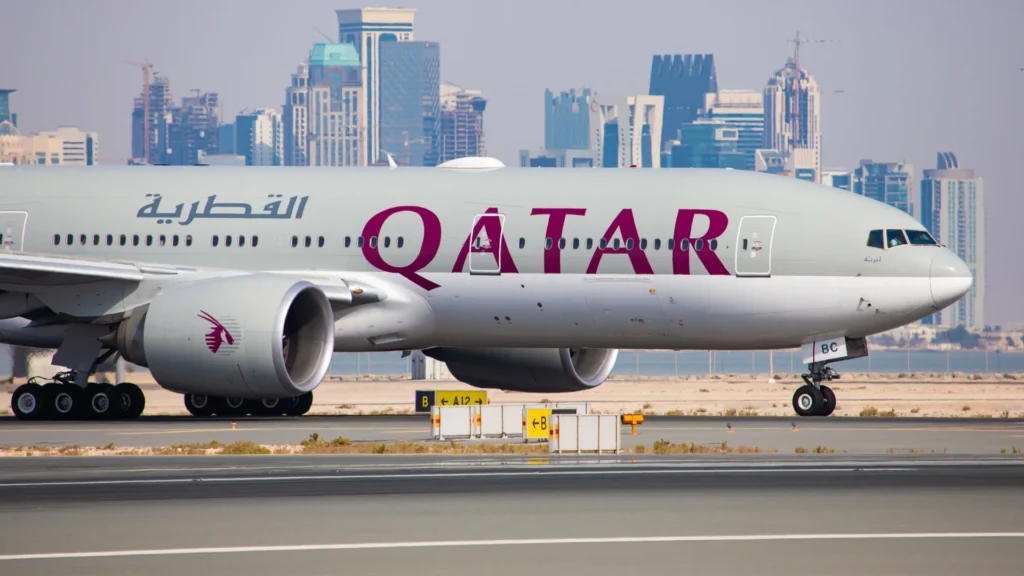 Photo: Qatar Airways
Photo: Qatar AirwaysReintegration into the Global Network
By reinstating flights to Aleppo, Qatar Airways adds a second Syrian destination to its expanding network, offering access to over 170 cities worldwide.
The move aligns with the airline’s long-term objective of strengthening regional connectivity and providing reliable access to underserved markets.
The resumption also supports business, humanitarian, and diaspora travel, facilitating essential connections for families and professionals across the region. Aleppo’s inclusion reflects Qatar Airways’ ongoing commitment to restoring critical air links in the Middle East.
 Photo: Qatar Airways
Photo: Qatar AirwaysBenefits for Privilege Club Members
Qatar Airways Privilege Club members traveling to Aleppo can earn Avios on their flights and while shopping or dining at Qatar Duty Free at Hamad International Airport (DOH).
Avios can be redeemed for travel upgrades, retail purchases, and exclusive experiences through the Privilege Club Collection.
The airline continues to position itself as a leader in premium service, operational safety, and global reach, offering passengers a seamless journey from Aleppo to any destination within its network.
 Photo: By Anna Zvereva from Tallinn, Estonia – Emirates, A6-ENN, Boeing 777-31H ER, CC BY-SA 2.0, https://commons.wikimedia.org/w/index.php?curid=78143543
Photo: By Anna Zvereva from Tallinn, Estonia – Emirates, A6-ENN, Boeing 777-31H ER, CC BY-SA 2.0, https://commons.wikimedia.org/w/index.php?curid=78143543Emirates Syria Flights
Emirates (EK) has officially reinstated its scheduled passenger services between Dubai International Airport (DXB) and Damascus International Airport (DAM), reconnecting Syria with the carrier’s vast global network after a 13-year absence.
The inaugural return flight, EK913, landed in Damascus (DAM) from Dubai (DXB), marking a major milestone in the resumption of bilateral travel, trade, and tourism between the UAE and Syria.
Emirates Restarts Syria Flights After 13 Years
Emirates (EK), the world’s largest international airline by scheduled international passenger-kilometers flown, has resumed its commercial flights to Damascus (DAM), Syria, following a suspension that began in 2012 due to the country’s civil conflict.
The inaugural service operated on July 21, 2025, with flight EK913 arriving from Dubai (DXB) at 2:30 PM local time aboard a Boeing 777-200LR.
The return of Emirates to Syria is a result of improving diplomatic and aviation relations between the UAE and Syria. The airline had initially launched services to Damascus in 1988 and maintained the route until 2012
Its reentry reflects a broader regional normalization and opens direct access to nearly 150 destinations across six continents through Emirates’ Dubai hub (DXB).
The celebratory flight carried 286 passengers, including senior UAE government officials and airline executives. Upon arrival, the aircraft was welcomed with a traditional water cannon salute.
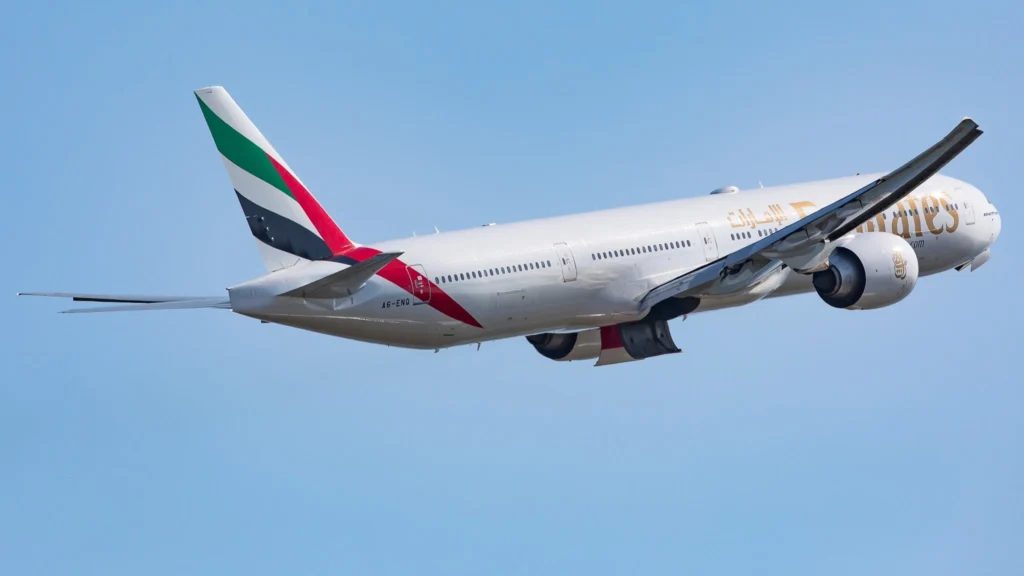 Photo: Clément Alloing
Photo: Clément AlloingPhased Frequency Expansion Planned
Initially, Emirates will operate the Dubai–Damascus service three times per week—on Mondays, Wednesdays, and Sundays. From August 2, 2025, the frequency will increase to four weekly flights with the addition of a Saturday service.
By October 26, 2025, the airline intends to escalate operations to a daily service, pending final regulatory and operational clearances. This gradual ramp-up allows Emirates to scale responsibly while closely monitoring demand and infrastructure readiness in Damascus.
In addition, passengers can benefit from extended connectivity via the airline’s partnership with flydubai (FZ), enhancing access to and from Syria through Emirates’ codeshare and interline services via Dubai International Airport (DXB).
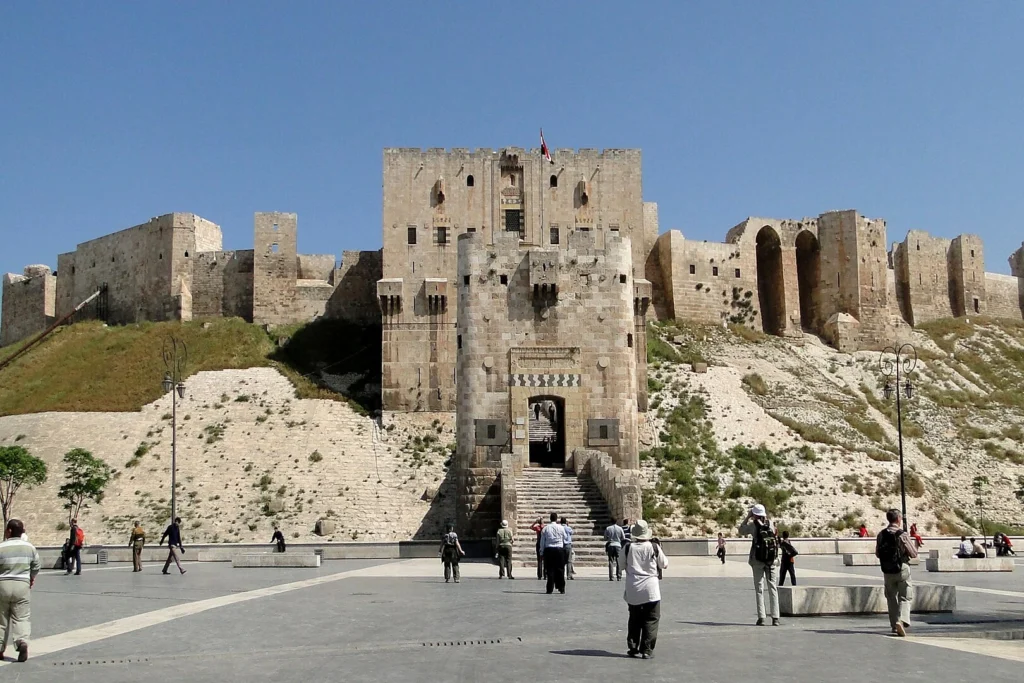 Photo: By Bernard Gagnon – Own work, CC BY-SA 3.0, https://commons.wikimedia.org/w/index.php?curid=11576683
Photo: By Bernard Gagnon – Own work, CC BY-SA 3.0, https://commons.wikimedia.org/w/index.php?curid=11576683Aleppo: Most Dangerous City in the World
In the wake of a swift and unexpected offensive, Hayat Tahrir al-Sham (HTS) seized control of Aleppo (ALP), Syria’s largest city, by the end of last year. The Assad regime’s presence has all but vanished, marking a historic shift in the country’s prolonged civil war, The Guardian reported.
With Kurdish forces still holding ground in parts of the city and rebel factions raising opposition flags, the ancient city — once divided, now cautiously unified — is navigating the uncertain path of post-regime reconstruction.
A Turning Point in Syria’s Civil War
Aleppo (ALP), once the economic hub of Syria and a city known for its rich 8,000-year history, has become the focal point of a dramatic and decisive power shift. In late November 2024, HTS launched a calculated and expansive offensive from its stronghold in Idlib, targeting weakened regime defenses.
Years of attrition, along with diverted Russian and Iranian support, created a window for this surprise takeover. In less than three weeks, President Bashar al-Assad fled Damascus, effectively ending more than five decades of Alawite autocratic rule.
As HTS-led Sunni factions advanced, Syrian Arab Army units collapsed in disarray. In Aleppo, regime strongholds crumbled quickly, and the Kurdish fighters entrenched in Sheikh Maqsoud chose not to surrender, instead holding their ground warily. While Kurdish units are nominally aligned with the regime, their distrust of Islamist factions has led them to cautiously avoid engagement.
Civilians in Aleppo now walk past burned-out checkpoints and destroyed homes, caught between the pain of past conflicts and the fragile hope of a better future. The withdrawal of regime forces has left behind symbolic ruins — torn portraits of Assad, defaced statues, and graffiti declaring a new dawn.
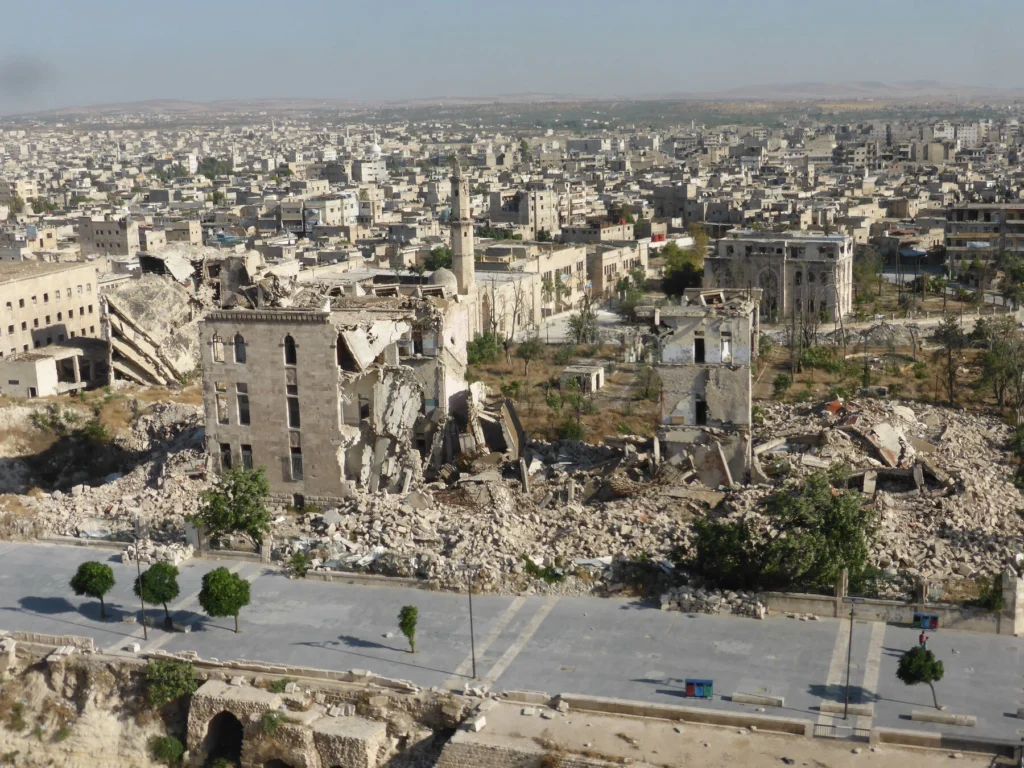 Photo: Francesco Bandarin
Photo: Francesco BandarinLife Amid Rubble and Rebirth
Although large swathes of Aleppo, especially in the east and south, remain in ruins, signs of change are emerging. The red, green, and white opposition flag is now a common sight across neighborhoods such as Sha’aar and Azaziyeh.
Schoolchildren carry the flag, and it decorates shops and vehicles — a stark contrast to the once omnipresent imagery of the Assad dynasty.
In the markets, once scarce essentials have returned. Goods from HTS-controlled Idlib and Turkey are now flowing into Aleppo, stabilizing prices.
Vendors like Bashar Hakami note the improvement in supplies, citing the end of rationing and an open black market replaced by structured trade routes. The scent of citrus and the hum of activity signal a slow but palpable revival.
However, peace is tenuous. In areas like Sheikh Maqsoud, the threat of sniper fire persists, and mistrust between factions remains high. A silent tension hangs over the city, where new freedoms are tempered by the enduring presence of armed groups and the lingering trauma of war.
 Photo: Qatar Airways
Photo: Qatar AirwaysMemories of War, Hopes for Peace
The scars of Syria’s civil war are everywhere. From 2012 to 2016, Aleppo was the epicenter of some of the conflict’s worst violence, including Russian and Syrian airstrikes on civilian zones. The White Helmets, a civil defense group known for rescuing victims of bombings, have returned to rebuild — physically and morally — from their old station in al-Ma’ari.
“We can’t miss this chance,” said Khaled Khatib, a 29-year-old White Helmet who once fled the city. “Aleppo is an open wound, but it’s time to heal.”
Older residents, like antiques dealer Joseph Fanoun, chose to remain even through the darkest years. Fanoun, draped in opposition colors, says his love for Aleppo kept him grounded. Others, like Mahmous Farash, recently returned and remain uncertain, wary of religious hardliners now present in daily life.
Despite ideological divides and a precarious peace, Aleppo’s citizens are daring to believe that the post-Assad era may bring a return to stability, or at least an end to their long nightmare.
Strategic Miscalculations and Regime Collapse
HTS’s success came not just from force but also from strategy. The group capitalized on regime vulnerabilities and the distraction of Assad’s allies — Russia in Ukraine, Iran in economic turmoil, and Hezbollah stretched thin by rising tensions with Israel.
The Assad regime, exhausted by years of internal purges and diminishing conscript morale, was caught unprepared. In Aleppo, local reinforcements failed to arrive in time, and symbolic resistance collapsed as statues and flags were torn down by the people themselves.
The fall of Damascus, shortly after Aleppo, sealed the fate of the Assad regime. It marked the first time since 1970 that Syria was no longer ruled by the Assad family.
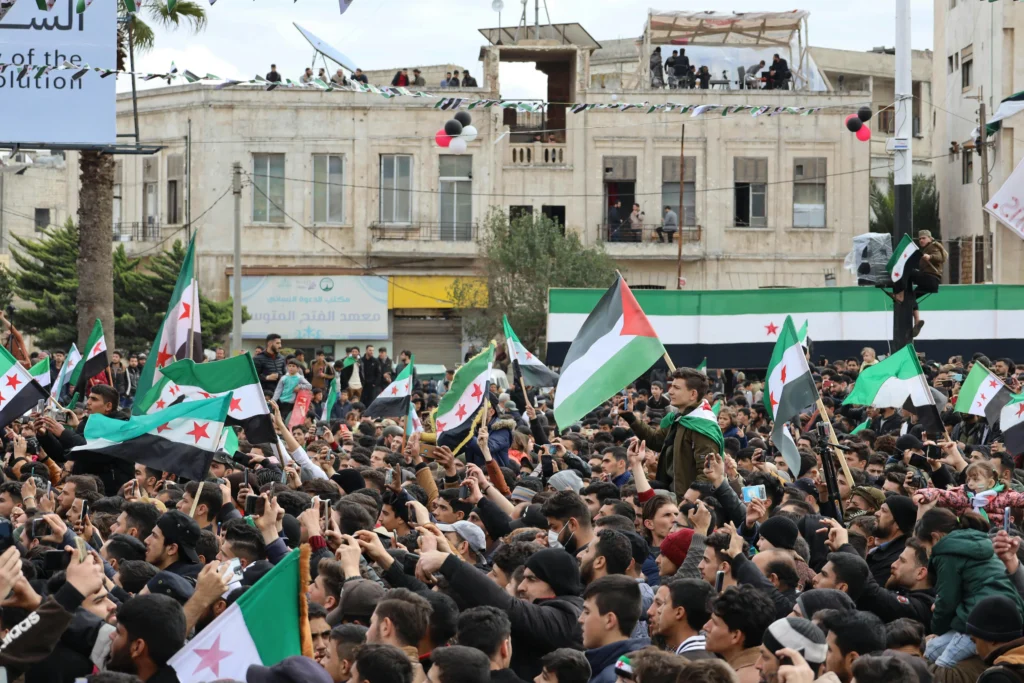 People on a Street Demonstration in Syria; Photo- Pexels
People on a Street Demonstration in Syria; Photo- PexelsA City of Contrasts and Uncertainty
Aleppo remains a divided and wounded city. The western side, once a bustling commercial hub, now bears the grime of neglect and pollution. The east, long devastated by barrel bombs and siege warfare, is a labyrinth of destruction and abandonment.
Yet even here, glimmers of normalcy are returning. Firefighters reunite, children attend school, and women navigate public spaces, cautiously measuring the ideological climate under HTS’s Islamist rule.
The road ahead is unclear. Syria’s future — federal, Islamist, democratic, or otherwise — remains unwritten. But for now, Aleppo stands as both a symbol of survival and crucible of what might yet be rebuilt from the ashes.
Stay tuned with us. Further, follow us on social media for the latest updates.
Join us on Telegram Group for the Latest Aviation Updates. Subsequently, follow us on Google News
Emirates Rescue $375 million Boeing 777 Grounded at Tehran Airport
The post Qatar Airways to Resume Flights to Most Dangerous City in the World After 14 Years appeared first on Aviation A2Z.

 4 miesięcy temu
4 miesięcy temu


